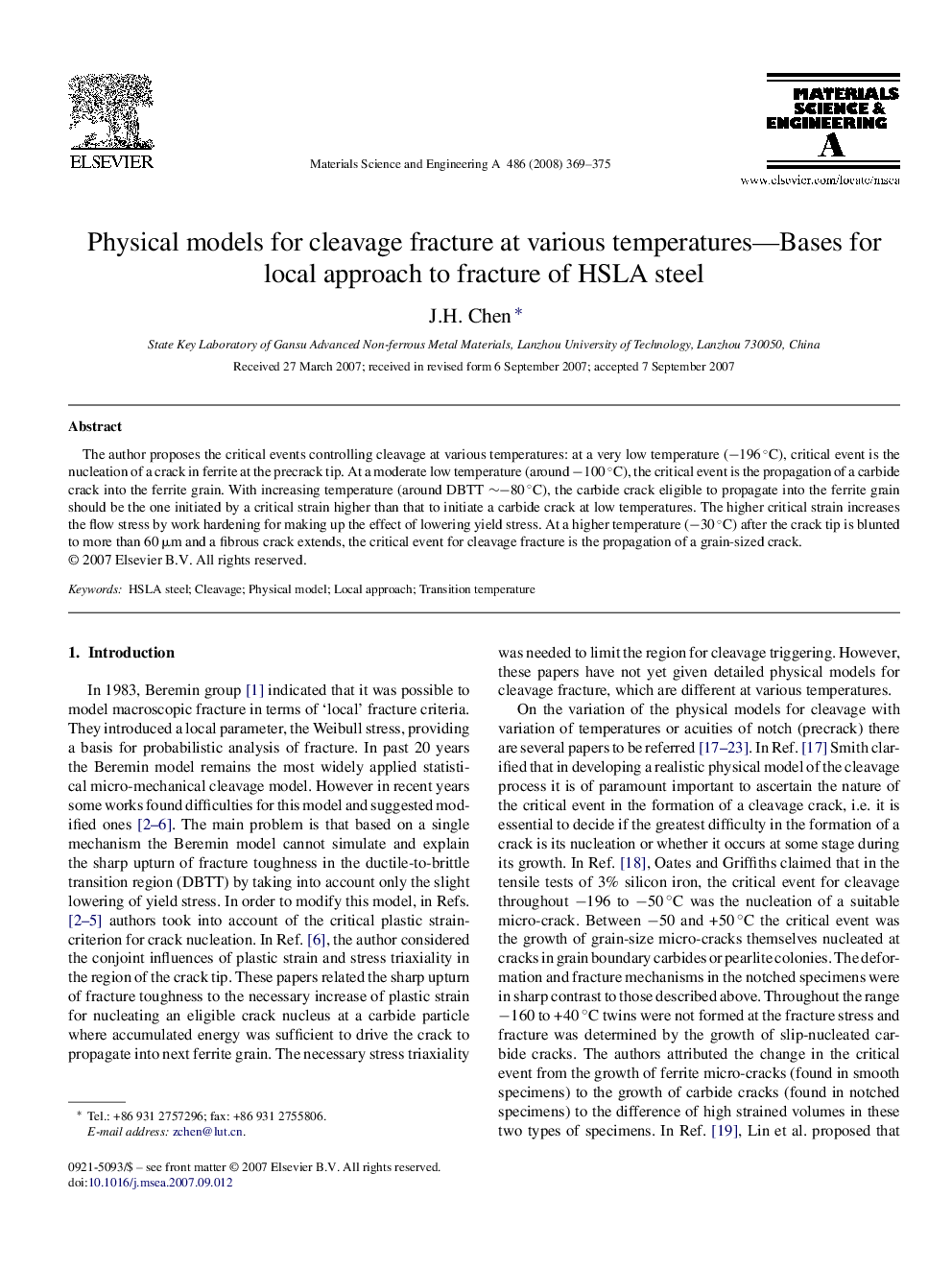| Article ID | Journal | Published Year | Pages | File Type |
|---|---|---|---|---|
| 1582755 | Materials Science and Engineering: A | 2008 | 7 Pages |
The author proposes the critical events controlling cleavage at various temperatures: at a very low temperature (−196 °C), critical event is the nucleation of a crack in ferrite at the precrack tip. At a moderate low temperature (around −100 °C), the critical event is the propagation of a carbide crack into the ferrite grain. With increasing temperature (around DBTT ∼−80 °C), the carbide crack eligible to propagate into the ferrite grain should be the one initiated by a critical strain higher than that to initiate a carbide crack at low temperatures. The higher critical strain increases the flow stress by work hardening for making up the effect of lowering yield stress. At a higher temperature (−30 °C) after the crack tip is blunted to more than 60 μm and a fibrous crack extends, the critical event for cleavage fracture is the propagation of a grain-sized crack.
